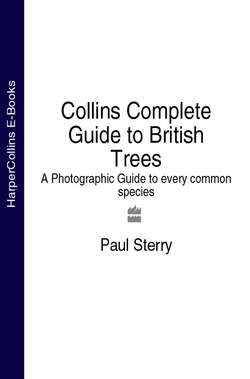Читать книгу Collins Complete Guide to British Trees: A Photographic Guide to every common species - Paul Sterry - Страница 15
REPRODUCTION
ОглавлениеTrees normally produce flowers when they are several years old. Beech, for example, produces its first flowers at around 30 years old, repeating the process each spring for the next 200 years if it remains healthy. Some trees, such as apples or oaks, have years in which they produce a large crop of fruits or seeds, followed by other years with hardly any, whilst other species, such as some maples, produce a good seed crop year after year.
Even a slight breeze will liberate pollen from the male catkins of Hazel
Carry it to female flowers.
Some trees and shrubs produce conspicuous flowers to attract pollinating insects, something that, in ornamental trees, we also find attractive. Honey Bees are particularly important pollinators, but numerous other insects visit the flowers for nectar and pollen. Many flowering trees have also long been prized by gardeners for their scent.
Many trees are pollinated by the wind. Their flowers are less conspicuous, often taking the form of catkins, which are pendulous and usually open before the leaves so that nothing impedes the free movement of the pollen grains. Wind-pollinated flowers normally have flowers of separate sexes, the males usually being larger and more abundant. Many wind-pollinated trees are such prolific producers of pollen that on warm breezy days in spring clouds of pollen can sometimes be seen blowing from the trees.
Conifer flowers are either male or female, and borne on the same or different trees. There are no petals, but some of the flowers are still quite colourful and decorative. Male flowers are short-lived, falling off after they have released clouds of pollen, but the female flowers, often covered with brightly coloured scales, remain on the tree after pollination and develop into cones containing the seeds. They rely on the wind for pollination and also for seed dispersal. A few close relatives of the conifers, such as the yews, produce fleshy fruits instead of cones.
Mature cones open and close in response to temperature and humidity, releasing seeds in hot, dry conditions.
The flowers of broadleaved trees and shrubs are usually hermaphrodite, containing both male and female parts, but there are a number of exceptions. Both sexes usually have petals in some form or other and they may also be scented. Small flowers are often grouped together in larger clusters to help attract pollinating insects. Some are wind-pollinated and open early in the year before the leaves, but insect-pollinated flowers usually open in spring and summer when more insects are active.
The fruits of trees and shrubs are much more varied than the cones of the conifers. They range from tiny papery seeds with wings, through nuts and berries, to large succulent fruits in a variety of shapes and colours. Edible fruits are designed to assist dispersal of the seeds by animals and many are delicious to the human palate.
Hawthorn flowers are an attractive sight in spring and are irresistible to pollinating insects.
HAZEL – NUTS
CRAB APPLE – FLESHY FRUIT
SYCAMORE – WINGED SEEDS
GUELDER-ROSE – BERRIES
The fruits of broadleaved trees and shrubs come in a range of shapes and size, including winged seeds, hard-cased nuts, luscious berries and juicy fruits.
